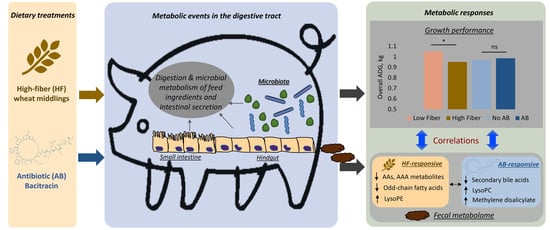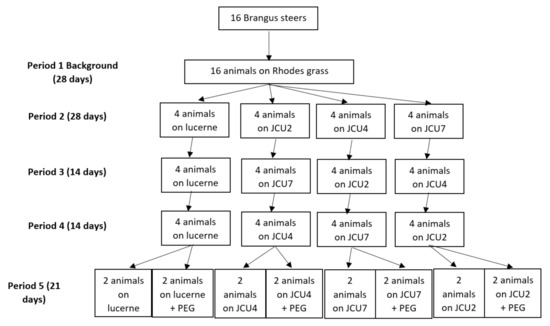Metabolic Effects of Animal Growth Promoters
A topical collection in Metabolites (ISSN 2218-1989). This collection belongs to the section "Animal Metabolism".
Viewed by 8598Editor
Interests: animal nutrition; metabolomics; microbial metabolism; nutrient metabolism; nutritional biochemistry; xenobiotic metabolism
Special Issues, Collections and Topics in MDPI journals
Topical Collection Information
Dear Colleagues,
Robust and efficient metabolism is the foundation of animal growth and production, serving as a determining factor of feed efficiency. Diverse approaches have been adopted in the livestock industry to enhance feed efficiency, targeting either feed or animal. Common targets of growth promotion in feed formulation are energy density, nutrient profile, and digestibility, while the targets in animal are numerous, including immune response, microbial metabolism, redox balance, and muscle growth. All these approaches can affect metabolism either directly or indirectly. Among these approaches, antimicrobial growth promoters (AGPs) were widely used in livestock production until very recently, but this practice has been largely prohibited due to concerns regarding resistant microbes and food safety. Therefore, extensive effort has been dedicated to the search for alternatives to AGPs, with the goal of replicating the metabolic effects of AGPs. This Topic Collection aims to explore the influences of growth promoters on these metabolic events, including metabolites, enzymes, genes and regulators, and their contributions to animal growth and health. Because diverse metabolic events occur in the complex and multi-step process of converting the nutrients in feed to the body mass of production animals, coverage of this Topic Collection includes, but is not limited to, the following topics:
- Metabolic fates of growth promoters;
- Effects of growth promoters on digestion, absorption, distribution and metabolism of nutrients;
- Effects of growth promoters on microbial metabolism;
- Effects of growth promoters on nutrient metabolism and redox balance.
Dr. Chi Chen
Collection Editor
Manuscript Submission Information
Manuscripts should be submitted online at www.mdpi.com by registering and logging in to this website. Once you are registered, click here to go to the submission form. Manuscripts can be submitted until the deadline. All submissions that pass pre-check are peer-reviewed. Accepted papers will be published continuously in the journal (as soon as accepted) and will be listed together on the collection website. Research articles, review articles as well as short communications are invited. For planned papers, a title and short abstract (about 100 words) can be sent to the Editorial Office for announcement on this website.
Submitted manuscripts should not have been published previously, nor be under consideration for publication elsewhere (except conference proceedings papers). All manuscripts are thoroughly refereed through a single-blind peer-review process. A guide for authors and other relevant information for submission of manuscripts is available on the Instructions for Authors page. Metabolites is an international peer-reviewed open access monthly journal published by MDPI.
Please visit the Instructions for Authors page before submitting a manuscript. The Article Processing Charge (APC) for publication in this open access journal is 2700 CHF (Swiss Francs). Submitted papers should be well formatted and use good English. Authors may use MDPI's English editing service prior to publication or during author revisions.
Keywords
- Animal metabolism
- Antibiotic growth promotor
- Metabolite markers
- Metabolomics
- Microbiota
- Nutrient metabolism









